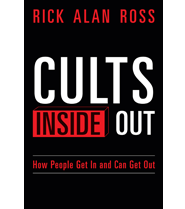How a rogue priest’s sex cult went unexposed for decades
Published By admin
If you’re a reader of 19th-century literature, you’ve probably rifled through the footnotes at times to find out what now-obscure words mean. One word that crops up in the works of Dickens and occasionally as late as the 1930s is “Agapemone”. In one 1939 newspaper report for example, it’s used to describe the then foreign secretary Arthur Balfour, surrounded by six women while lunching at the Ritz. In Ford Madox Ford’s Parade’s End novels, it hints at something darker. “This whole war was an Agapemone,” the character Sylvia Tietjens, tells her husband. “You went to war when you desired to rape innumerable women.”
But it was first used in the 1840s to describe a religious community in Somerset – also known as the Abode of Love – which was founded by a rogue Anglican priest, Henry James Prince. As Stuart Flinders tells us in A Very British Cult, the majority of Prince’s followers were young women, many of them prosperous. Prince presented himself to them as the voice of God, demanded absolute obedience and promised an instant passage – without death – to heaven.
In turn, many of his followers donated large sums of money. Among those enticed were three sisters from the Nottidge family, who each pledged the then vast sum of £6,000, to be put towards a luxurious mansion for Prince and his followers. (They were also told to marry Prince’s loyal lieutenants). Prince’s successor, John Hugh Smyth-Pigott, who had similar charms, declared himself the Christ.
Unsurprisingly, rumours of these happenings, as well as the court cases brought forward by relatives, whetted the appetite of the press. Newspapers were amused by the Agapemonites’s billiard table, installed in their Somerset chapel, and the obsession with playing hockey that seemed to take over followers. Even Punch mocked Agapemonites about their mysterious fixation on money.
Then there were journalists who were entranced by the group’s London church, called the Ark of the Covenant, designed in Gothic style for Smyth-Pigott. John Betjeman swooned about it in The Spectator in 1956, declaring the Agapemonites as “good, gentle people, much maligned”. But the Abode of Love was actually neither amusing, nor harmless, as Betjeman seemed to imply. Ford Madox Ford was closer to the real story, with his character’s comment about rape.
Content retrieved from: https://www.telegraph.co.uk/books/non-fiction/review-a-very-british-cult-stuart-flinders/.






